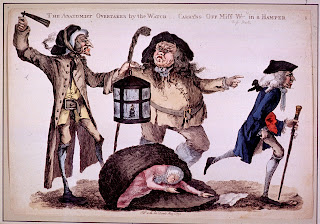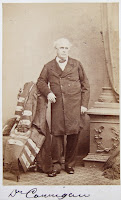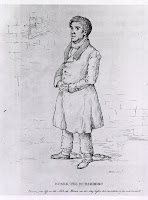Dr John Fleetwood and the Body Snatchers

I have recently made a start on cataloguing the collection of
Dr. John Fleetwood, which was donated to RCPI by his family in 2007. Dr
Fleetwood was born in 1917 and attended Blackrock College before studying medicine at UCD. He became interested in gerontology (care of the elderly), having attended an International Gerontology conference and was instrumental in establishing the Irish Gerontological Society in 1950, of which he was an active member. He was also a Fellow of the Royal College of Physicians in Ireland and contributed regularly to the Royal Academy of Medicine in Ireland. Dr Fleetwood researched and wrote widely on the history of medicine. He published The History of Medicine in Ireland (1951) and The Irish Body Snatchers (1988), as well as a variety of shorter pieces on a range of topics. The Fleetwood bequest reflects his interests in gerontology and medical history, including body snatching. RCPI archive also holds a collection of papers relating to Dr Fleetwood including many of his research notes and articles, for more details
click here.
Since 300 B.C. anatomists have wanted to know how the body worked, what its functions were and most importantly what was really under all that skin on a human being. Although many medical students had to content themselves with textbooks and animal dissections, some intrepid scholars braved the illegality of dissecting of a human body and made significant findings in anatomy and medicine. The growth of medical schools in the 18th and early 19th centuries increased the demand for cadavers for students to practice on. Those who practiced body snatching and who made a living from it were termed resurrectionists or resurrection-men. In the early 19th century, it was common for the bodies of criminals who had been executed to be passed on to the medical schools but as the use of capital punishment receded, demand soon outstripped supply.

In Ireland during the 18th and early 19th century, body snatching was as prevalent as anywhere else. The first written record occurs in Faulkners Dublin Journal in May 1732, when a grave digger in a church in Suffolk Street received a prison sentence for turning a blind eye to resurrectionists and their work. The problems seem to have been mainly concentrated in Dublin where there were a number of medical schools. Cases of bodysnatching in other areas of the country did occur although they were rare. Many of the graveyards had to build watchtowers which were patrolled by armed defenders, such as Bullys Acre in Kilmainham and Cruagh, near Pine Forest. In addition, iron coffins were used or a wooden coffin was protected from being vandalised by iron bars. This was known as a mortsafe, an example of which can be found in Drumcondra church yard. In several other graveyards, early 19th century graves have been discovered to have been covered by heavy stone slabs- no doubt to prevent the grave being robbed. On at least one occasion in Dublin the 'staggering-home' technique was used to transport a dead body from the graveyard. This involved dressing the corpse in clothes and two people supporting it on either side while pretending that the body was their drunken friend. On one occasion, two students who were stopped were found to be transporting the dead body of a woman dressed in a man's muffler and coat.

In his book, Fleetwood also recounts a story about
Sir Dominic Corrigan who as a student set out on a grave robbing expedition. The grave they intended to rob was that of a labourer who had died on his way home from seasonal work in England. However, when they got there, the grave was being guarded by the man's widow. The students proceeded to guarantee the safety of the grave and took up a collection for the woman as a mark of their respect. For Corrigan's own account of his body snatching escapades
click here. Bully's Acre in Kilmainham received a lot of attention from body snatchers as it was a communal burial ground and easily accessed. In 1825, a sentry captured a well known resurrectionist by the name of Thomas Tuite who was in possession of five bodies and his pockets were also found to be full of teeth. At that time a full set of teeth was worth £1 (€800 in today's money), making grave robbing, although distasteful, an extremely lucrative business.

Of course the most well known Irish body snatchers were
Burke and Hare, two men from Northern Ireland who moved from grave robbing to murder in Scotland between 1827 and 1828 in order to supply fresh corpses to the medical schools. Between them, they murdered 12 people and supplied the corpses to a well known physician in the medical school in Edinburgh. After they were caught, Hare testified against his friend in order to gain immunity and William Burke was hanged in January 1829. The Burke and Hare murders directly influenced the passing of the Anatomy Act in 1832 by the Government. This allowed unclaimed bodies and those which were donated by relatives to be used for the purposes of study. It also required the licensing of anatomists. This law effectively ended the body snatching trade in Great Britain and Ireland.
Ruth Talbot
Library Intern